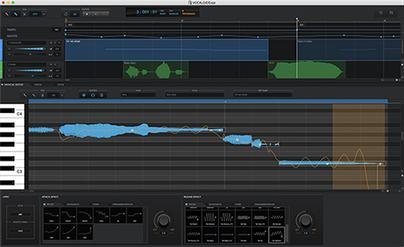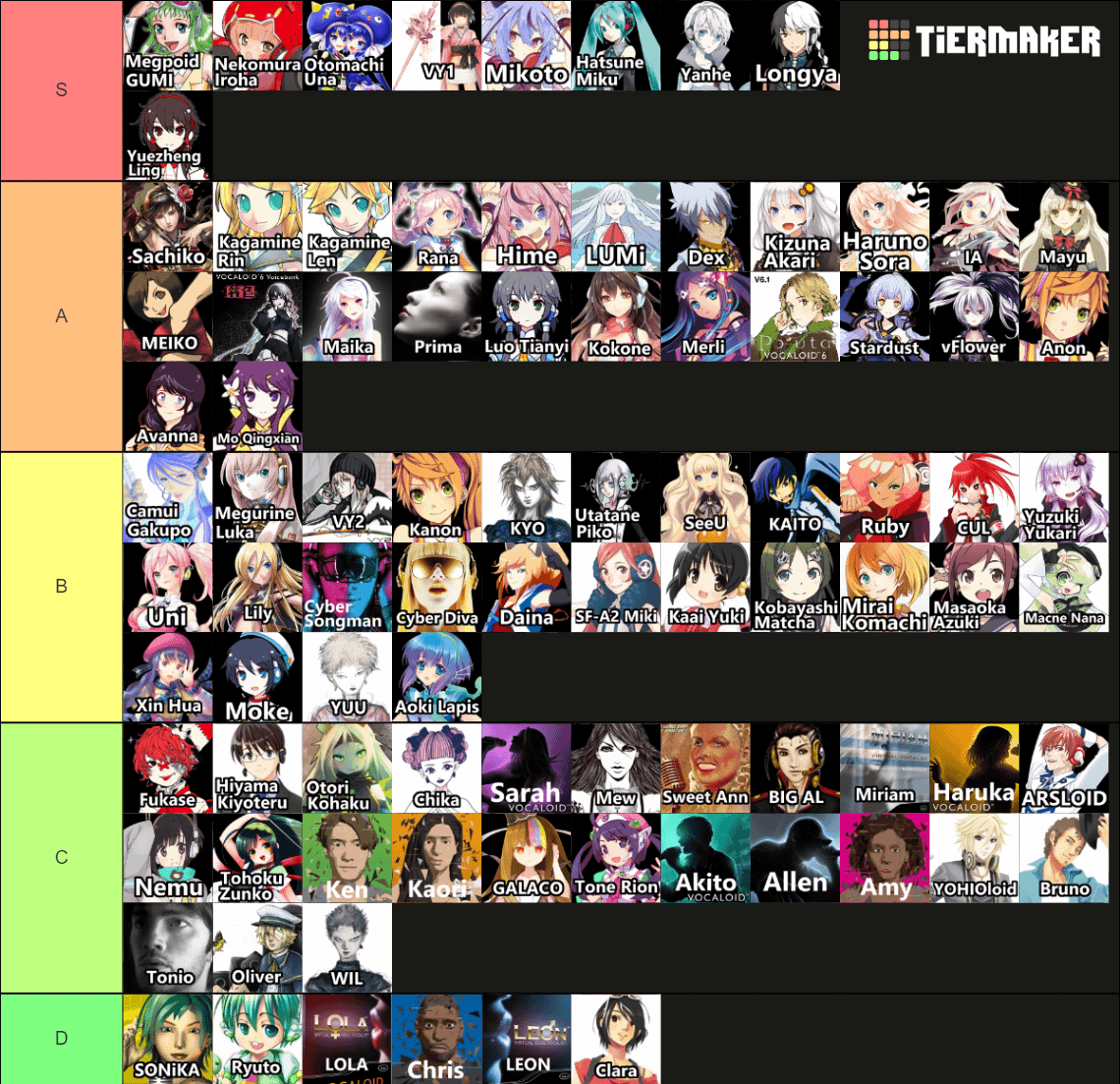Vocaloid is a fascinating world of virtual singers. It’s more than just software.
For fans and newcomers alike, the Vocaloid universe holds many surprises. From its origins to its impact on music, there’s always something new to learn. Yet, some secrets remain hidden, even from the most dedicated enthusiasts. These secrets reveal unexpected aspects of the technology and its community.
They also highlight the creativity and innovation behind this digital phenomenon. Are you ready to dive deeper? Discover the five most shocking secrets about Vocaloid you’ve never heard before. Prepare to be amazed and see Vocaloid in a whole new light.

Credit: www.reddit.com
Introduction To Vocaloid
Vocaloid has taken the world by storm in recent years. Yet, many people know little about it. Vocaloid is a fascinating blend of music and technology. It has given birth to a unique and vibrant culture. In this section, we will dive into the basics of Vocaloid. We will explore its history and how it has evolved over time.
What Is Vocaloid?
Vocaloid is a singing voice synthesizer software. It allows users to create songs using synthesized vocals. These vocals are made to sound like human singers. You can control pitch, tone, and other aspects of the voice. This makes it possible to create diverse and unique songs.
Many people use Vocaloid to produce music without needing a human singer. This has opened up new possibilities in the music industry. Vocaloid has become a tool for both amateur and professional musicians. It is especially popular in Japan but has fans worldwide.
History And Evolution
Vocaloid was first developed by Yamaha Corporation. It was released in 2004. The first version did not gain much popularity. But with time, improvements were made. New versions and voices were introduced.
The release of Hatsune Miku in 2007 was a turning point. She became a cultural icon. People loved her voice and character design. This led to a huge increase in Vocaloid’s popularity. Other characters like Kagamine Rin and Len followed. Each new character brought fresh sounds and styles.
Vocaloid has evolved significantly since its inception. The technology has improved. The voices sound more human-like now. The community has also grown. There are now countless songs, concerts, and even fan art. Vocaloid has become more than just software. It is a vibrant and growing culture.
Secret Origins
Vocaloid, a voice synthesizer software, has captured the hearts of many music lovers. Yet, few know about its secret origins. This section dives into the fascinating beginnings of Vocaloid, revealing surprising facts.
Early Development
The development of Vocaloid began in 2000 at Pompeu Fabra University in Barcelona, Spain. At that time, the goal was to create a tool to aid in music production. The software was not initially intended for public use. Instead, the developers aimed to assist songwriters and producers with a synthetic voice.
By 2003, Yamaha Corporation took notice and licensed the technology. They saw potential in it and began refining it for commercial release. The first version of Vocaloid hit the market in 2004.
Vocaloid’s early development faced many challenges. Creating a natural-sounding voice was difficult. Engineers and developers worked tirelessly to improve voice quality. Their hard work paid off, and Vocaloid soon became popular among musicians and fans.
Unexpected Inspirations
Several surprising inspirations influenced Vocaloid’s development. One key inspiration was the idea of a virtual idol. The concept of a digital character with a synthetic voice intrigued the developers. This idea led to the creation of iconic Vocaloid characters like Hatsune Miku.
The team also drew inspiration from existing voice synthesis technologies. They studied various speech synthesis techniques to improve Vocaloid’s realism. This research helped them create voices that sounded more natural and expressive.
Traditional music production methods also played a role. The developers aimed to mimic the nuances of human singing. They analyzed recordings of real singers to capture the subtleties of pitch and tone. These efforts resulted in a more lifelike vocal performance.
Hidden Features
Vocaloid is full of surprises. Many users only know the basics. But there are hidden features that can enhance your experience. Let’s uncover some of these secrets.
Advanced Customization
Did you know Vocaloid offers advanced customization? You can tweak each vocal sound. Adjust pitch, tone, and even breathing. It allows for a unique creation. You can make the voice sound more human or robotic. The level of detail is surprising. Dive into the settings and explore!
Unknown Capabilities
Vocaloid has unknown capabilities that many overlook. For example, you can integrate it with other software. This opens up new creative possibilities. You can also use Vocaloid for live performances. The software can sync with live instruments. It makes the performance more engaging. Try experimenting with these features.

Credit: www.youtube.com
Voice Providers
Vocaloid software uses voice providers to create its distinctive sounds. These providers are often real singers whose voices are recorded and digitized. This process creates the unique vocal tones you hear in Vocaloid songs. Let’s dive into some surprising facts about these voice providers.
Real Vocalists Behind Voices
Many people do not realize that real vocalists lend their voices to Vocaloids. For example, the famous Hatsune Miku’s voice comes from Saki Fujita, a Japanese voice actress. Each Vocaloid’s voice is unique, thanks to the voice provider’s natural tone and style.
Other notable voice providers include:
- GUMI – voiced by Megumi Nakajima
- Kaito – voiced by Naoto Fūga
- Megurine Luka – voiced by Yū Asakawa
These artists spend hours recording various phonetic sounds. These sounds are then pieced together to create the full vocal range for the Vocaloid.
Uncredited Contributions
Many voice providers go uncredited for their work. This is due to various reasons, including confidentiality agreements. This means fans often don’t know who is behind their favorite Vocaloid voices.
Some uncredited contributions include:
| Vocaloid | Uncredited Voice Provider |
|---|---|
| Yuzuki Yukari | Chihiro Ishiguro |
| VY1 | Undisclosed |
| VY2 | Undisclosed |
This secrecy can be frustrating for dedicated fans. They want to give credit where it is due. However, it also adds a layer of mystery to the world of Vocaloids.
Underground Community
Vocaloid is a popular music software known for its synthesized singing. Beneath the surface, there exists an underground community that thrives on passion and creativity. This community is full of dedicated fans who explore various niches and create unique content.
Niche Fandoms
Within the underground community, there are several niche fandoms. These small groups focus on specific Vocaloid characters or genres. They often share rare songs and remixes that are not mainstream. Such devotion helps keep these characters and styles alive.
Some fans prefer lesser-known Vocaloids like Gachapoid or Yuki Kaai. They create and share content centered around these characters. Their dedication is astonishing and adds diversity to the Vocaloid universe.
Fan-made Content
The underground community excels in producing fan-made content. This includes custom songs, artwork, and animations. Fans use their skills to create new experiences with Vocaloid software. This content often showcases unique styles and ideas not found in official releases.
Many fans collaborate on projects. They combine their talents to produce high-quality content. This collaboration leads to a vast library of fan-made works that enrich the Vocaloid community.
One can find fan-made music videos with elaborate storylines. Some fans even develop their own Vocaloid characters. These creations demonstrate the limitless potential of the community’s creativity.
Financial Impact
Vocaloid has become a global phenomenon. Its influence extends far beyond music creation. The financial impact of Vocaloid is often overlooked. Let’s dive into some surprising financial secrets about this digital sensation.
Profitability
Vocaloid has proven to be highly profitable. The software generates significant revenue through various channels. Here are some key aspects contributing to its profitability:
- Software Sales: Vocaloid software is sold worldwide. Each new version attracts thousands of buyers.
- Merchandising: Vocaloid characters are extremely popular. They are featured on merchandise like clothes, accessories, and toys.
- Live Concerts: Virtual concerts draw huge crowds. Tickets, merchandise, and sponsorships add to the revenue.
- Music Sales: Songs created using Vocaloid are sold on platforms like iTunes and Spotify.
- Licensing: Companies pay to use Vocaloid characters and voices in their projects.
Surprising Investments
The development and maintenance of Vocaloid involve significant investments. Here are some surprising areas where investments are made:
- Research and Development: Constant improvements are made to the software. Advanced technology and AI play a big role.
- Voice Sampling: Professional singers record voices. This process is costly but ensures high-quality output.
- Marketing: Vocaloid is promoted globally. Marketing campaigns help reach a wider audience.
- Concert Production: Virtual concerts require state-of-the-art technology. This includes 3D holograms and advanced sound systems.
- Community Engagement: Maintaining a strong fan base is crucial. Investments are made in fan events and online communities.
The financial impact of Vocaloid is vast and intricate. Its profitability and the surprising investments behind it reveal a fascinating aspect of this digital phenomenon.
Technological Innovations
The world of Vocaloid is full of surprises. Its technological innovations are constantly evolving. These advancements have changed how we think about digital music and virtual performers. Let’s dive into some of the most fascinating secrets.
Cutting-edge Software
Vocaloid’s software is always advancing. The voice synthesis technology is now more realistic than ever. Yamaha’s engineers are always refining it. This has made Vocaloid voices sound more human-like.
The software uses complex algorithms to produce clear voices. It can even mimic different singing styles. This allows artists to experiment with various musical genres. Below is a table showing some of the latest features:
| Feature | Description |
|---|---|
| Voice Banks | Different voices for various musical styles |
| Pitch Control | Adjusts pitch for natural-sounding vocals |
| Expression Control | Modulates emotion and tone |
Future Developments
The future of Vocaloid looks bright. New features are on the horizon. Developers are working on real-time voice synthesis. This could allow Vocaloid performers to sing live. Imagine a virtual concert with real-time interaction.
Another exciting development is AI integration. This could make voice synthesis even more natural. AI could learn and adapt to new singing styles. Below are some anticipated features:
- Real-time voice synthesis
- AI-driven voice adaptation
- Enhanced emotional expression
These advancements will make Vocaloid even more versatile. The gap between human and digital singers is narrowing. Stay tuned for more surprises from the world of Vocaloid.

Credit: www.reddit.com
Global Influence
Vocaloid, a popular music software, has taken the world by storm. It has influenced various cultures and sparked international collaborations. Let’s dive into the global influence of Vocaloid.
Cultural Impact
Vocaloid has changed how we experience music. It has introduced virtual singers with unique voices. These virtual singers have become cultural icons. They have appeared in concerts, movies, and video games. Their influence goes beyond music. Fans create art, stories, and fan merchandise. The Vocaloid community is vast and active. It spans across different cultures and languages.
International Collaborations
Vocaloid has brought together artists from around the world. Musicians collaborate with Vocaloid producers to create new sounds. These collaborations cross borders and genres. They blend traditional music with modern technology. Vocaloid has also worked with brands for special projects. These projects often feature exclusive songs and performances. The global reach of Vocaloid continues to grow.
Frequently Asked Questions
What Is Vocaloid?
Vocaloid is a voice synthesizer software developed by Yamaha. It allows users to create singing vocals by typing lyrics and melody. The software uses voice samples from real singers.
Who Created Vocaloid?
Yamaha created Vocaloid in collaboration with various developers. The initial version was released in 2004. It has since evolved significantly.
How Does Vocaloid Work?
Vocaloid works by using voice samples and combining them with user-inputted lyrics and melodies. The software then synthesizes singing.
Why Is Vocaloid Popular?
Vocaloid is popular due to its unique ability to create synthetic singing voices. It allows for creativity and has a dedicated fanbase.
Conclusion
Vocaloid holds many surprising secrets that captivate music lovers. These little-known facts add depth to the fascinating world of digital singers. Dive deeper into Vocaloid’s history and discover even more intriguing details. Share these secrets with friends and spark interesting conversations.
Stay curious and keep exploring the musical marvels that Vocaloid offers. This captivating technology continues to evolve, bringing new surprises. Embrace these secrets and enjoy the vibrant world of Vocaloid.










